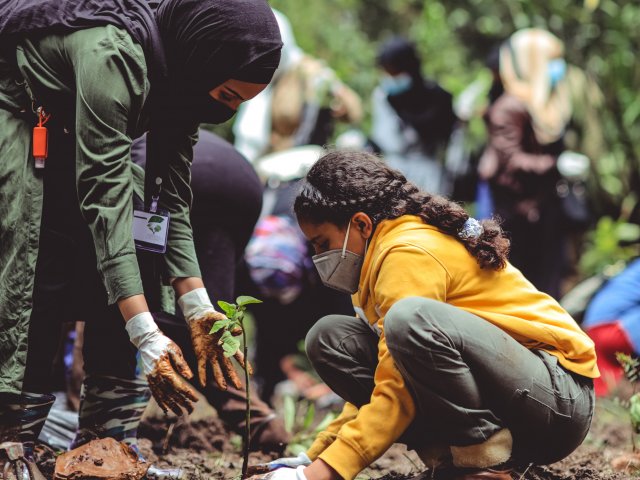Sustainable Development Goals
SDG13 – Climate Action
![]()
Climate action means stepped-up efforts to reduce greenhouse gas emissions and strengthen resilience and adaptive capacity to climate-induced impacts. The science has shown that human activities (e.g. burning fossil fuels and poor land management practices) would lead to these climate impacts, many of which are now tracking beyond even conservative modelling.
Climate change is increasing the frequency and intensity of extreme weather events such as heat waves, droughts, floods and tropical cyclones, aggravating water management problems, reducing agricultural production and food security, increasing health risks, damaging critical infrastructure and interrupting the provision of basic services such water and sanitation, education, energy and transport (UNEP).
There is no country that is not experiencing the drastic effects of climate change. Greenhouse gas emissions are more than 50 percent higher than in 1990. Global warming is causing long-lasting changes to our climate system, which threatens irreversible consequences if we do not act. The annual average economic losses from climate-related disasters are in the hundreds of billions of dollars. This is not to mention the human impact of geo-physical disasters, which are 91 percent climate-related, and which between 1998 and 2017 killed 1.3 million people, and left 4.4 billion injured. The goal aims to mobilize US$100 billion annually by 2020 to address the needs of developing countries to both adapt to climate change and invest in low-carbon development.
Supporting vulnerable regions will directly contribute not only to Goal 13 but also to the other SDGs. These actions must also go hand in hand with efforts to integrate disaster risk measures, sustainable natural resource management, and human security into national development strategies. It is still possible, with strong political will, increased investment, and using existing technology, to limit the increase in global mean temperature to two degrees Celsius above pre-industrial levels, aiming at 1.5°C, but this requires urgent and ambitious collective action (UNDP).
The negative effects of climate change are already visible in so many aspects of life. In Australia we saw this in the unprecedented 2020 summer bushfires driven by our changing climate, as forecast in the 2008 Garnaut Review. We can all take action: through our Sustainability Strategy and Action Plan we have committed to improving the energy efficiency of our properties and looking to renewable sources of power, and we can support these efforts through education, increasing awareness, and taking action ourselves.

Learn more and take action
- WOSM’s Scouts For SDGs page: Climate Action (WOSM)
- Scouting Ireland’s 17days17sdgs campaign: Climate Action (SI)
What does climate change look like? How can we be part of taking action to tackle it?
![]()
Scientists have been studying climate change for many decades, drawing on long-term monitoring of our climate and evidence from ice-cores to build a long term data set – have you invited a scientist or other trained person along to your Unit to talk about it?
Scouts Australia’s youth program team have started developing ideas for how you might engage with each of the Sustainable Development Goals. This card challenges you to contribute to our global goal of Climate Action by exploring the causes and effects of climate change, and how you could take action. Every small part counts as we work towards these goals!
Share your efforts
Now that you’ve taken action, share it to inspire others. If you post to social media, please tag Scouts Australia and include the hashtags #Scouts4SDGs #ScoutsAustralia #SDG13 #ClimateAction, and then head over to scout.org to register your project: https://www.scout.org/node/add/project



